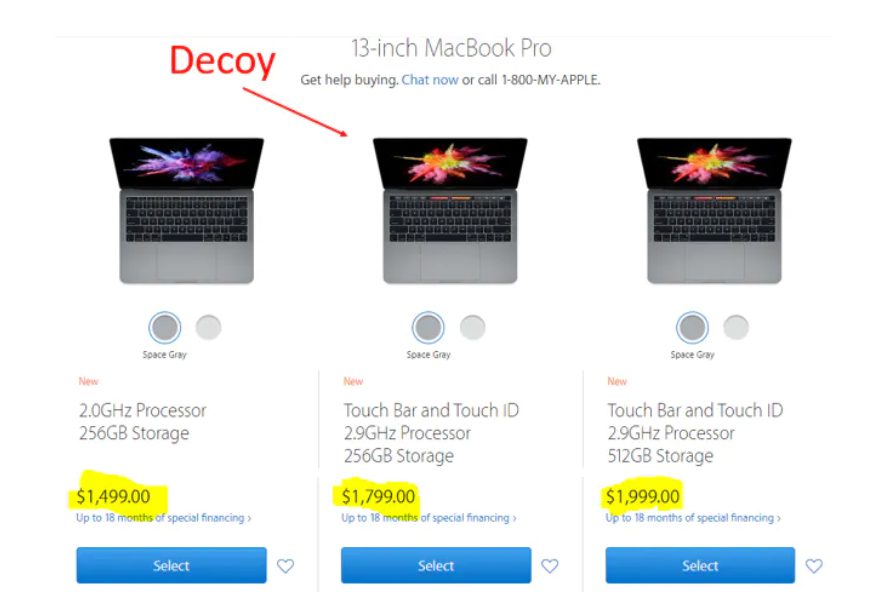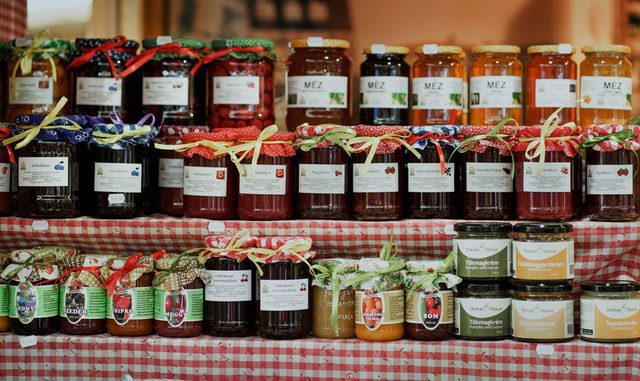Human behaviour does not follow a logical pattern; it is mostly impulsive. Customers are not interested in what you offer, but rather how you can help them. They are happy to pay for expensive things if other people have them, and they will dedicate roughly three seconds of their time to your website. How do you convince them to stay – and buy?

Table Of Contents
People buy expensive wines they know nothing about; they spend hundreds of pounds on designer clothes; but paying £5 for a useful app is deemed to be a lot.
Your online store is constantly engaged in a fight for their attention. On social media, you are in competition with cute cats and photos of babies. On the web, you’re trying to distract customers from watching a video or reading an article.
You can win this fight with the assistance of psychology. Human behaviour has its rules. And those don’t change, unlike trends.
Conversion tip #1: Sell even the most expensive products
You arrive at the cinema and you want to buy popcorn. They offer you the choice of a small, medium or large bag, and you know right away that you want the medium one. Naturally. You simply wouldn’t be able to eat the big one.
But then you notice that the bigger bag costs only 50p more than the medium one. You immediately decide that the medium bag is rubbish and the large one is worth it. You’ve fallen prey to the so-called “decoy effect”.

A typical example of the decoy effect is the fast food business, but this psychological technique works just as well in e-commerce.
This psychological effect has been used in advertising and marketing for over thirty years and it still works. When a customer is given a choice between three products, the middle one of which is at first sight disadvantageous (the medium sized popcorn), the customer reaches for the more expensive offer, believing that he/she has chosen the better option.
Even Apple capitalises on human behaviour
You can use a similar concept when displaying products in your online store. Take Apple, for example. Notice the three laptops in the image below.

Displaying products in the online store using the decoy effect
The middle option is disadvantageous when compared to the most expensive laptop. The difference between it and the more expensive laptop is only $200, but you get twice the storage.
However, the middle laptop isn’t just there for the sake of it. It’s the best friend of its more expensive neighbour, because it boosts its sales exponentially.
Conversion tip #2: Retargeting and the Baader-Meinhof phenomenon
Imagine that someone told you about how great their new Audi is. You don’t even realise it and suddenly you see this make everywhere you go. Little by little, it slips into your subconsciousness. In time, you might even want to buy an Audi yourself.

Try to think about Audi today and spend a couple of hours looking out for this make in your local area. Don’t you feel that somehow, there are more of them?
This phenomenon is called the Baader-Meinhof phenomenon, or the illusion of frequency. If you are considering building a house, it is likely to seem to you that everyone around you is doing building works at the moment. In reality, that’s not the case, you’re just paying more attention to it.
How to utilise the illusion of frequency in marketing?
Make sure you repeat what you want your customers to remember. The more often they see your ad, the more it will stick in their minds. Retarget customers who have left the website, be consistent and persistent. Good advertising needs to be a little bit annoying.
Conversion tip #3: Don’t overwhelm the customer with options
Customers are typically indecisive, because they are afraid of making a bad purchase. They compare and analyse everything. They make decisions not only between products from different online stores, but also between products within a single website.
The sight of 20 types of face masks or 30 flavours of toothpaste is too much for the brain. This effect is called the paradox of choice.
Too many options overload the mind and customers leave, feeling frustrated. And remember, they don’t blame their own indecision, they blame your online store.
The jam experiment
A Columbian university did a simple experiment. They set up a stall and sold jams.
During the course of one day, they changed the number of jams on offer every hour. First they would be offering 6 varieties, then they would offer 24. When this number was higher, 60% of the passers-by would stop by, but only 3% of them would make a purchase. Conversely, when the range was smaller, around 40% of passers-by stopped and 30% bought.

Having too large a range of jams meant that customers were unable to choose and instead of buying, they just browsed the selection.
The result of this experiment speaks unequivocally. People like to browse a lot of options, but that doesn’t necessarily lead to a purchase. Think of this when you offer 5 types of membership or create 20 varieties of scented soap.
Don’t overcomplicate the customer’s purchasing experience. Instead, offer fewer products packed with testimonials and quality descriptions.
Conversion tip #4: Ask the right questions
The following piece of advice is not so much related to sales as it is to the actual development of the product or online store. Anyone who creates something new usually asks for other people’s opinion. Unfortunately, enthusiasm and one’ s own convictions can be your biggest enemies.
Even if you are convinced that you want to hear an honest opinion, you naturally ask questions that lead to the confirmation of your assumptions. Do you like our online store? Would you like to purchase such-and-such product? Do you like the packaging we designed? Were you satisfied with your purchase?
These types of questions overwhelmingly lead to positive answers and the negative ones don’t tell you anything of substance. Try asking questions differently.
Questions, which will advance you forward
Why not ask:
- What don’t you like about a competitor’s product or online store?
- Is there something that would improve your shopping experience?
- Did you find all the information about the product you were looking for? Is there any information you think is missing?
These questions are, first and foremost, more honest and their answers more revealing.
Conversion tip #5: Insert happiness into your texts
Do you know which of your friends’ social media posts have the most comments and likes? The ones that show true happiness, of course. Typically, these can include an engagement, a wedding, or the birth of a child.
Advertising posts work in the same way. From a psychological point of view, achieving happiness is a priority and it attracts more attention than tragedy. Research proves this. Compared to fear, unhappiness or anger, happy posts perform much better.
How can you best utilise happiness?
Remember this point when you’re creating your social media advertising. Use “strong words” in your headlines that evoke positive emotions.
Positive content also helps when it comes to product descriptions and emotive videos. Combining this with a dash of humour is even more fruitful. Happiness also helps with post performance, and posts with emoticons tend to be more successful.
Conversion tip #6: Boost your business with psychology
The link between psychology, human behaviour and sales techniques works. You don’t have to feel guilty. On the contrary, do make use of them, but in moderation. Sincere communication, along with creative imagery and a quality copy will grab the attention of even the busiest of customers.
Want to find out if your ads are effective? Contact us and we’ll be happy to help.
Thanks to the Dexfinity Editorial Staff for Creating This Article
Author: Adriána Černáčková
Editor: Martin Bartl
Published by: Róbert Hošták
Translated by: Nikola Davis
DIRECT CONTACTS
Let's Join Forces!
Show us your project and we will talk about its growth potential.

Pavol Adamčák
Executive Director
+421 918 435 105
pavol.adamcak@dexfinity.com

Vladimír Nociar
Head of Business Development team
+421 903 568 464
vladimir.nociar@dexfinity.com
Choose what you are interested in and feel free to mark multiple choices.


